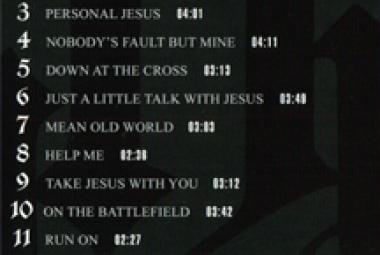Gene Vincent (born Vincent Eugene Craddock; February 11, 1935 – October 12, 1971) was an American musician who pioneered the styles of rock and roll and rockabilly. His 1956 top ten hit with his Blue Caps, “Be-Bop-A-Lula”, is considered a significant early example of rockabilly. He is a member of both the Rock and Roll Hall of Fame and the Rockabilly Hall of Fame. (More from Wikipedia)
As important as he is in his home country, the influence of Buddy Holly among British musicians is incalculable. Quoting Bruce Eder again: “The group’s heavy use of rhythm guitar slotted right in with the sound of skiffle music, a mix of blues, folk, country, and jazz elements that constituted most of British youth’s introduction to playing music and their way into rock & roll. Additionally, although he cut an exciting figure on-stage, Holly looked a lot less likely a rock & roll star than Elvis – tall, lanky, and bespectacled, he looked like an ordinary guy who simply played and sang well, and part of his appeal as a rock & roll star was rooted in how unlikely he looked in that role. He provided inspiration – and a way into the music – for tens of thousands of British teenagers who also couldn’t imagine themselves rivals to Elvis or Gene Vincent in the dark and dangerous department. . . . Additionally, although he played several different kinds of guitar, Holly was specifically responsible for popularizing – some would say elevating to mystical, even magical status – the Fender Stratocaster, especially in England.”
* * *
Ritchie Valens released just two 45’s but still showed incredible versatility. His first, “Come On, Let’s Go” is now regarded as a straight-up rock and roll classic, but it failed to chart. Writing in 1998, Billy Vera recalls “first hearing [“Come On, Let’s Go”] on Alan Freed’s TV Dance Party, a local New York equivalent of Dick Clark’s American Bandstand. It was a record which really grabbed my teenaged ears. I had never heard anything quite like it. It had a much ‘thicker’ sound than anything by Elvis, Chuck Berry, Gene Vincent, or even Eddie Cochran. For thickness, the only thing that came close was Bo Diddley.”
* * *
During the middle of a tour in late 1957 with Gene Vincent and Eddie Cochran, Little Richard had a series of visions – one of which turned out to be the launching of the first artificial satellite by the Soviet Union, Sputnik 1 – that convinced him to abandon his rock-and-roll life and go into the ministry. He shocked the world by announcing his conversion to Christianity while still a major star. He enrolled in a Bible College and formed the Little Richard Evangelistic Team in 1958.
(June 2013/1)
* * *
Kim Fowley was a hustler first and foremost and would be a contender with James Brown as the Hardest Working Man in Show Business, at least among those (mostly) working behind the scenes. The Sun Herald obituary noted: “[Kim Fowley] went on to write or produce songs for a range of musicians, including the Byrds, the Beach Boys, Frank Zappa and the Mothers of Invention, Gene Vincent, Helen Reddy, and Warren Zevon” – but the article could just as easily have listed a different half-dozen prominent names.
(January 2015/1)
* * *















